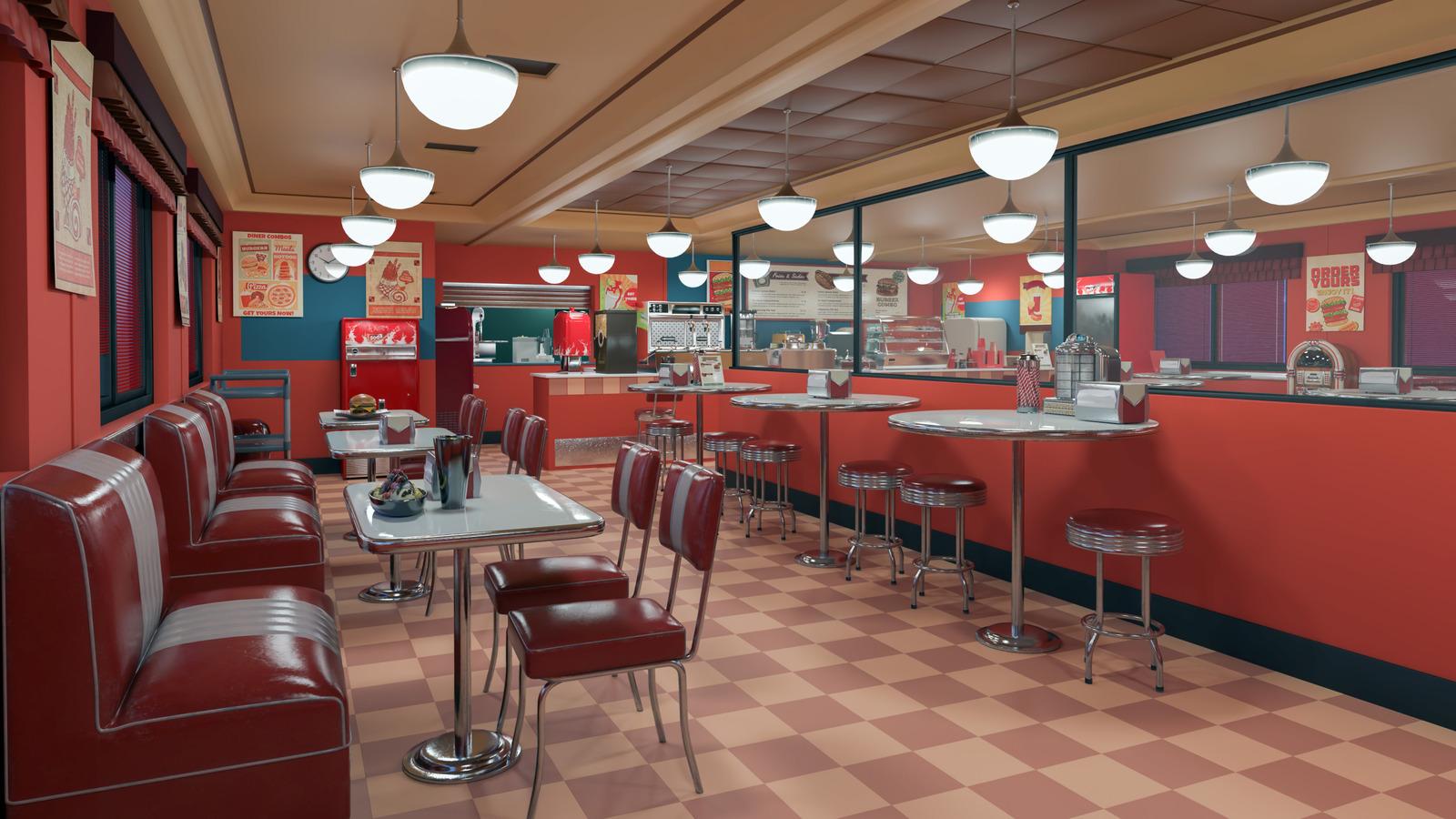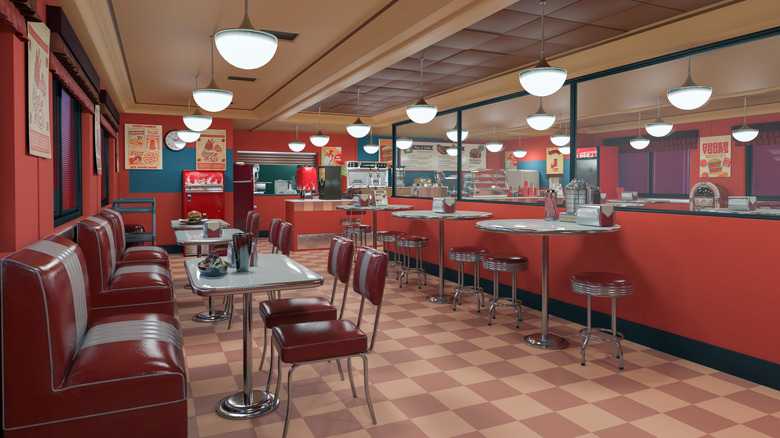
Iangoodphotography/Getty Images
There's a reason diners never go out of style. The chrome-sided roadside stops and neighborhood institutions, with their sticky menus and bottomless coffee, have a kind of magic that other restaurants can't replicate. But as casual as they seem, diners also have their own rhythm, shaped by decades of unspoken rules. There are some common mistakes everyone makes at a diner, whether to do with food, etiquette, or opening hours.
The truth about diners is that they can be as much a community space as a place to eat. But times are changing, and you can't necessarily expect an old-school diner experience everywhere you go. What's more, the informality can trip up those not in the know. From ordering the wrong way, to misunderstanding how seating works, it's surprisingly easy to make a few rookie mistakes. Behaving according to the unwritten etiquette will ensure a smoother dining experience, and also show respect for the staff, and the culture of the diner itself.
So, before you slide into that booth and order, it's worth learning a few common missteps that even the most loyal diner-goers make. This will help you feel like you belong, even if you're new to the wonders of the classic diner.
Assuming you always have to wait to be seated
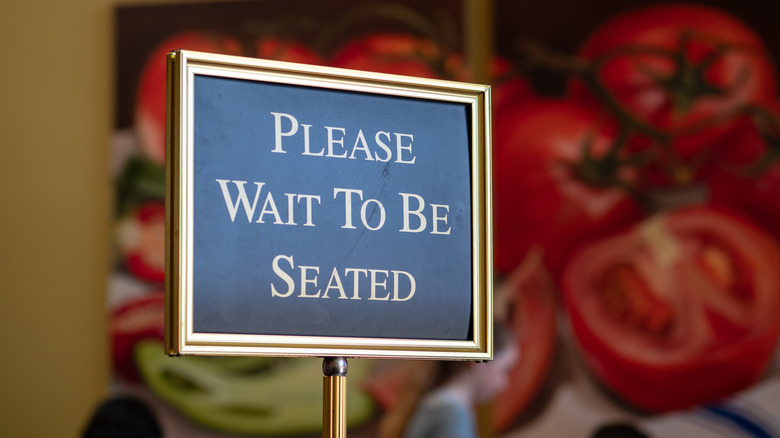
David Tran/Getty Images
In most restaurants, you wait by the door until someone with a clipboard or headset tells you where to sit. But in diners, that's often not the case. If you make the mistake of assuming you should wait to be seated, you may end up waiting a long time.
Unless there's a clear "Please Wait to Be Seated" sign, feel free to grab yourself any available, clean booth. Even at spots where you should wait for a table, it's typically fine to grab a stool at the counter. Diners are built for fast service, quick turnover, and friendly informality. In most cases, if a table's been cleaned, it's yours. Waiting around for someone to seat you when there's an open table just slows things down for everyone, including the staff.
That said, it's still smart to read the room. Smaller, old-school diners sometimes have a preferred system during peak hours, so a quick check-in with a server or the person behind the counter never hurts, especially if you want a specific table. The counter is almost always fair game, and many regulars actually prefer sitting there for the conversation, faster service, and front-row view of the griddle. The real mistake is overthinking it. If you're unsure, don't just loiter. Ask someone. The faster you get comfortable, the sooner that coffee cup will be filled.
Ordering the wrong types of dishes

oneinchpunch/Shutterstock
There are some foods you should never order at a diner, and other dishes that always taste better at a diner. Oftentimes, your diner experience isn't due to a spot being good or bad, but the choices you make. If you think that diner food sucks, you might just be ordering wrong.
In general, diners do breakfast foods well. Pancakes, waffles, hash browns, and home fries are usually delicious, even at basic establishments. Burgers and fries are also top-notch diner fare. Sandwiches like Reubens often taste amazing, too. Milkshakes are perfect for washing everything down. And, once you're done with savory food, you can often find amazing pies at diners.
Ordering the wrong dishes at a diner, meanwhile, is a mistake. While quality can certainly vary among diners, don't expect them to serve the best steaks; they'll often arrive too rare, or too well done. Scrambled eggs from diners can also be hit or miss, and you might find that they're made from powder. You should also avoid pasta dishes at these kinds of establishments. They might be perfectly fine, but they're not going to be great. For better noodles, you're better off hitting up an Italian restaurant.
Expecting the coffee to be free

Pkripper503/Getty Images
One of the most persistent diner myths is that coffee is free. This probably comes from the fact that refills are usually free. Bottomless coffee is part of the charm of a diner, and servers regularly top you off without your asking. However, you'll typically need to pay for the initial cup.
Still, don't assume unlimited freebies in every situation. Drip coffee is usually the only type that gets topped up indefinitely. Specialty drinks, like lattes and iced coffees, are unlikely to come with free refills. If you want another cup once you're done with the first, expect to pay. And don't forget to tip generously for the extra work those refills require, especially during busy shifts, when servers are juggling multiple tables.
Enjoy the refill culture, as it's part of the diner experience. Just remember that you're probably paying for the first cup, and that special or takeaway drinks are in a different category. If you're someone who drinks a lot of coffee, those extra cups you get for free are gold.
Complaining about bad coffee
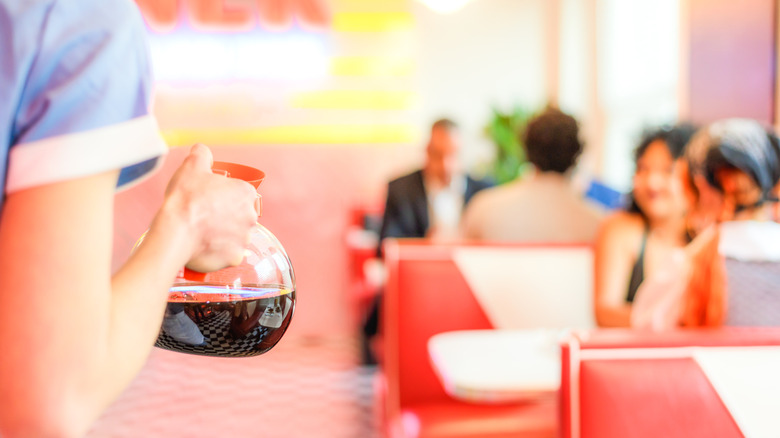
Georgeclerk/Getty Images
If you're complaining about bad coffee from your local diner, you're missing the point. It's not trying to be a third-wave espresso. It's very much its own thing. For generations, the hot beverage has been the backbone of neighborhood eateries and truck stops, fueling workers up early, and partiers out late. Grumbling about diner coffee misses that cultural context.
There's a reason why diner coffee tastes different. It's often brewed from dark-roasted Robusta beans, which has a lot of body, and a quick bloom. It's made for consistency, heat retention, and an approachable flavor that works with milk and sugar. That sometimes means it also has stronger, more bitter notes compared to a carefully made pour-over, but that's part of its appeal. Dinner coffee is sturdy, comforting, and made to be poured from a pot that has been languishing on a hot plate all morning.
If the flavor doesn't suit you, there are better ways to handle it than with a complaint. Consider ordering an espresso-based drink, rather than a cup of filter coffee, or just stick to tea. This is not supposed to be the kind of bougie drink you get at the hippest coffee shop in town, and you're better off embracing that.
Expecting old-school diner foods
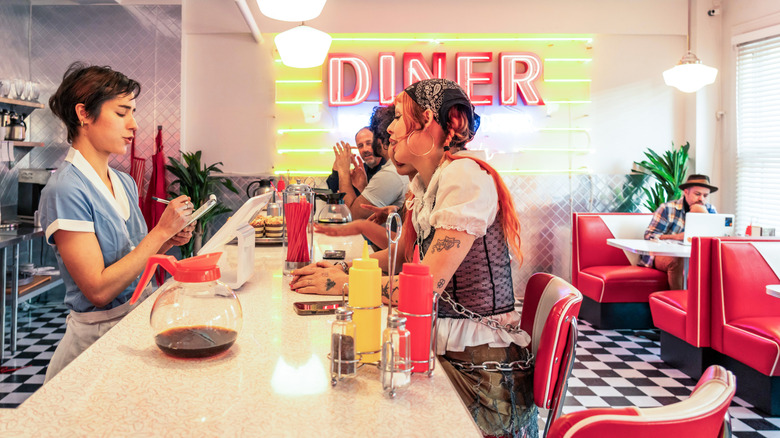
Georgeclerk/Getty Images
The era of traditional diner staples like chipped beef, jelly omelets, and oyster stew has mostly passed. While diners can serve a wide range of dishes, expecting old-school diner foods can be a mistake. Many classic items have faded because of changing tastes. Others might no longer be on the menu because of the rising cost of ingredients, and the need to streamline kitchens for speed and profit. Today's diners focus on crowd-pleasers like pancakes, burgers, club sandwiches, and standard breakfast combos, because those are what regulars order, and what keeps the line moving.
That doesn't mean nostalgic dishes are impossible to find. Some regional or long-running diners still hold onto old favorites, but that practice is becoming increasingly rare. If you're chasing a lost classic, call ahead or check menus online. You can also seek out specialty restaurants, and food festivals where cooks revive retro recipes with care.
If you're looking for the same diner menu you would have found in the 1940s, you might be disappointed. Don't think of modern offerings as a loss, but an evolution. Embrace the present, trust the menu options, and ask about daily specials. And if nostalgia is the goal, do your research beforehand so you don't leave disappointed.
Not taking advantage of all-day breakfast

Justin Sullivan/Getty Images
One of the best things about diners is the freedom to eat breakfast whenever you want. Pancakes in the afternoon; a bacon, egg, and cheese for dinner; waffles at 3 a.m. after a night out — these are luxuries you can enjoy at many diners. All-day breakfast isn't a gimmick; it makes sense. But so many people skip this unique perk. While you can't expect every diner to offer all-day breakfast, many do. It's best to take advantage of it when you can.
If you love breakfast foods, don't limit them to the first half of the day. Choose your favorite morning combo at any time, and feel free to get creative. Ask for modifications (like adding an egg to your burger, or getting the hollandaise on the side) or build a plate from scratch to suit your appetite. Diner servers are used to special requests, and often appreciate those who know exactly what they want.
All-day breakfast gives you flexibility, and control over what you eat. A lighter breakfast can work as a midday meal, while an indulgent one makes for late-night comfort food. If you're in a group, consider ordering a variety of breakfast plates to share. Diners understand breakfast's universal appeal. Don't take that for granted.
Thinking the food quality will be the same in every spot

Justin Sullivan/Getty Images
Not every roadside pitstop or neighborhood eatery guarantees a great burger, or perfect pancakes. You may find yourself at one of the best diners in America, or one of the worst. They can vary from amazing to just fine, or worse. Some are run to offer scratch-made gravies, pickles brined in-house, and eggs cooked to order, any way you like them. Others are stretched thin, forced to rely on frozen components, and the cheapest shortcuts to turn plates quickly. Expecting uniform quality is a quick route to disappointment.
There are ways to spot the good ones, but they aren't foolproof. If it's busy, that's a good sign, especially in towns where there are plenty of options to choose from. Look for handwritten daily specials, a chalkboard of fresh pies, or staff that clearly takes pride in recommending dishes. Cleanliness matters, too: A tidy service station, and clean coffee urns point to a kitchen that cares. And don't ignore word-of-mouth. Locals are more reliable than generic online ratings.
When traveling, try to stick to recommendations, either in person or online. If you've found a good spot but are not sure what the best thing on the menu is, ask the server what the house does well, or what regulars order. Those conversations are likely to get you better food than just choosing at random. But the first trick is learning which diners are worth the detour.
Ignoring regional dishes

Ali Waxman/Getty Images
One of the most fun parts about eating at diners while traveling is that their menus will often reflect where you are. If you eat the same thing everywhere you go, you'll miss out on local specialties. These are often the best things on the menu, approached with extra care and attention. Having a go-to favorite is all well and good, and it can serve as a fine starting point, but you should be willing to expand your horizons when presented with regional options you can't get elsewhere.
In Pennsylvania, and parts of the Mid-Atlantic, you can order scrapple, which is a pan-fried loaf of seasoned pork and cornmeal, usually served as a breakfast side. Cincinnati has a similar dish called goetta, but head south, and you'll start to see grits pop up in various forms: creamy with butter, crowned with cheese, and even dressed up with shrimp in spicy gravy. In New England, seafood chowders show up more often than you'd think. But you just never know what you'll find.
When you sit down, glance at the specials, or ask the server what's regional. If you're unsure, and with a group, get a local item to share. This is a low-risk way to taste the local cuisine, while still enjoying the classics you know and love. You'll eat better, learn something, and maybe find a new favorite that never made it onto menus back home.
Using vintage diner lingo
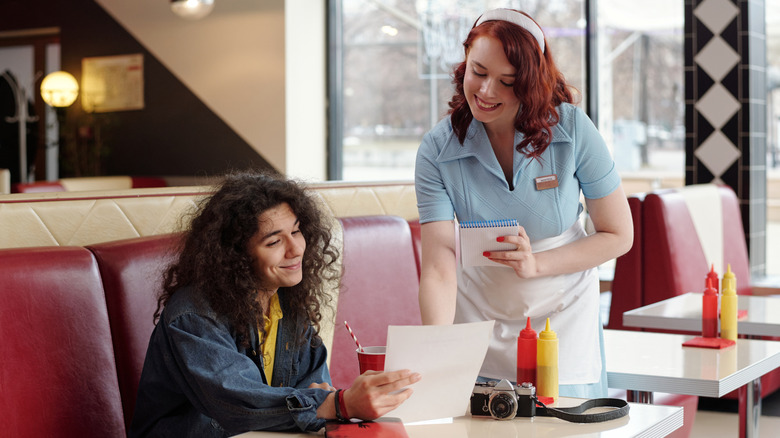
Shironosov/Getty Images
Diner lingo is part of the old-school romance of these places. In the heyday of greasy spoons, waiters and cooks were known to yell certain phrases back and forth, adding to the ambience. Over time, though, these communications have become more common. Someone ordering "Adam and Eve on a raft," or asking for "hash that's been sassed," sounds charming in a film. But in real life, while the language is a fun piece of culinary history, most modern servers aren't fluent in vintage slang.
Back in the day, diner lingo was about speed. The super-fast verbal shorthand really took off in the 1920s, hitting its peak in the busy, bustling hash houses of the 1950s and '60s. It was a way for servers and line cooks to communicate complicated orders quickly and accurately in a really loud environment. Phrases like "burn one" (a chocolate malt) or "wreck 'em" (scrambled eggs) were just way more efficient.
Today, ordering a "mystery in the alley" (which is simply asking for a hash on the side) is kitschy and fascinating, especially for food nerds like us. But don't expect your server to know what you're talking about. They're hard-working professionals, but they aren't living back in the 1950s. Ordering a meal plainly — "two eggs, over-easy, with a side of home fries" — is faster and clearer. It avoids confusion, and won't leave you feeling embarrassed. Servers juggle many tables, and thousands of little preferences. Plain language saves them (and you) time.
Not knowing how to order your eggs
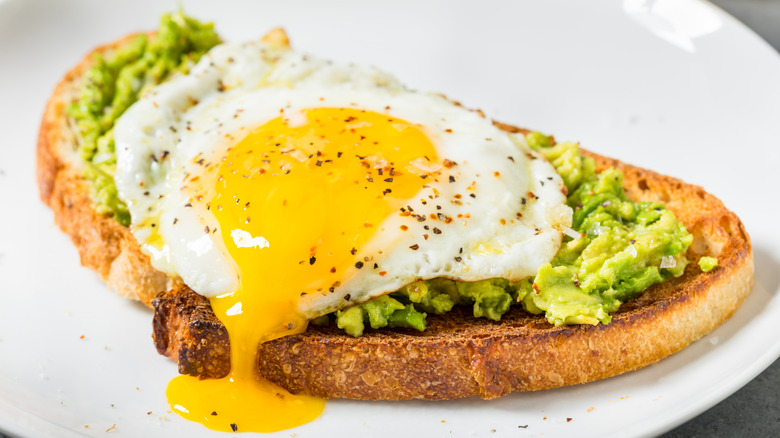
Brent Hofacker/Shutterstock
Eggs are a basic staple, universally loved, but breakfast lovers take them seriously. At a diner, you should, too. You might think you know how you like your eggs, but if you aren't also sure how to order them properly, you'll end up disappointed. Knowing the lingo (and we don't mean the old-school diner lingo) saves awkwardness, and gets you what you want.
Here's the quick breakdown: Hard-scrambled means when eggs are cooked through with firm curds, while soft-scrambled yields larger, creamier curds that still have a silky texture. A sunny-side-up egg has been cooked on one side only; it has a bright, runny yolk, and a glossy white. Basted is a halfway technique, wherein hot fat is spooned over the top of the egg but it isn't flipped, so the white sets, and the yolk's surface firms slightly. Poached eggs are simmered in water for a delicate and runny center. Over-easy eggs are flipped once, and served with the yolk still runny. For over-medium, the eggs are flipped so the yolk is partially set, and slightly jammy. And eggs over-hard have yolks that are fully cooked through.
Omelets are a different animal. While diners commonly have omelets on the menu, many won't swap an omelet for the eggs in a combo; it's a separate dish. If you want an omelet, order it outright rather than assuming it can replace your "two eggs, any style."
Assuming diners are open 24/7
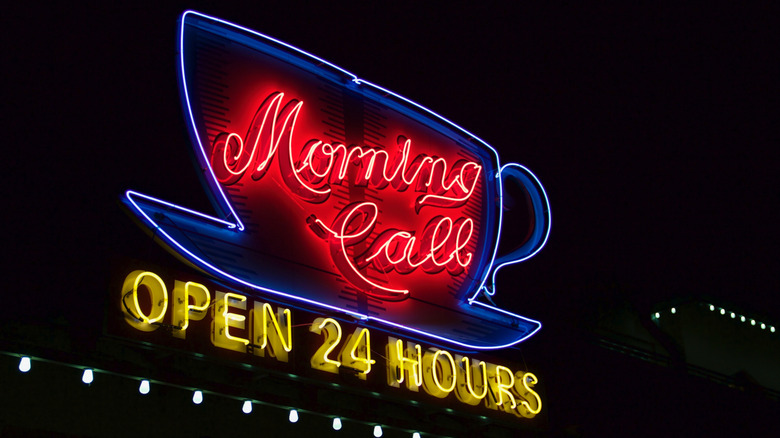
gemnannerb/Shutterstock
The 24-hour diner is an iconic American image. We can all conjure that brightly lit neon sign on a dark road, or a city street corner, promising a hot cup of coffee, and a plate of pancakes, no matter the hour. For decades, we've thought that our favorite local spot would always be there for us after a late-night concert, or a long shift. But times are changing, and it's now a mistake to assume that your nearest diner is open all the time.
One of the biggest cultural shifts we've seen in the diner world since 2020 is the slow-but-steady disappearance of the "always-open" model. When the pandemic hit, restaurants of all kinds were forced to pare back their hours, and for many diners, it hasn't made sense to return to 24/7. Now, you might want to check the hours on Google Maps before you head out.
Between serious staffing shortages (it's harder than ever to find folks willing to work that graveyard shift), rising food costs, and the fact that our late-night habits have changed, it's not as profitable to keep the grill on all night. So, while you might occasionally find an all-night diner, you shouldn't assume that it's something that every town has. It's a sad day when you can't get waffles at midnight, but it's just one of those changes that we all have to live with.



